5 Historic Mercury Marine Engines
Feb 8th 2018
5 Historic Mercury Marine Engines
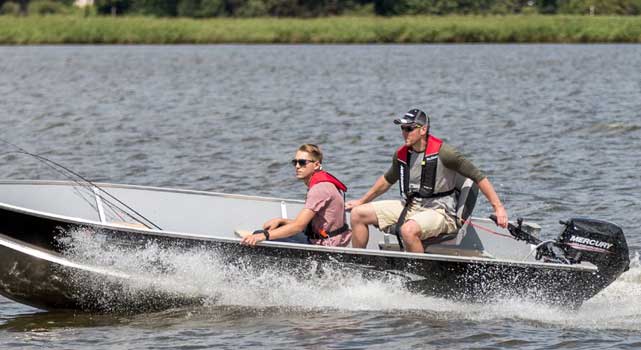
Boating enthusiasts across the globe are familiar with the Mercury Marine name. Mercury Marine is the world’s top leading manufacturer of marine engines; they are to boating and marine powersports as what Toyota is to today’s auto industry.
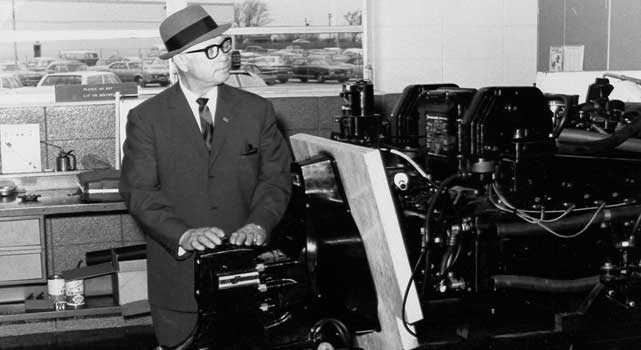
Carl Kiekhaefer
Mercury Marine’s story begins in 1939 in Cedarburg, Wisconsin. Engineer Carl Kiekhaefer, a former draftsman for rivals Evinrude Motors, purchased a small outboard motor company with the intent on entering the dairy industry. With Kiekhaefer’s purchase of the company came 300 defective outboard engines. Kiekhaefer and his small team rebuilt the engines and sold them to the famous American mail-order retailer, Montgomery Ward. Because Kiekhaefer and his people not only repaired, but also improved upon the engine designs, feedback from Montgomery Ward’s customers was highly positive. This translated to more orders and so, Kiekhaefer Mercury (intentionally taking on the Mercury name to ride the coattails of Ford’s Mercury Motor Division) was born.
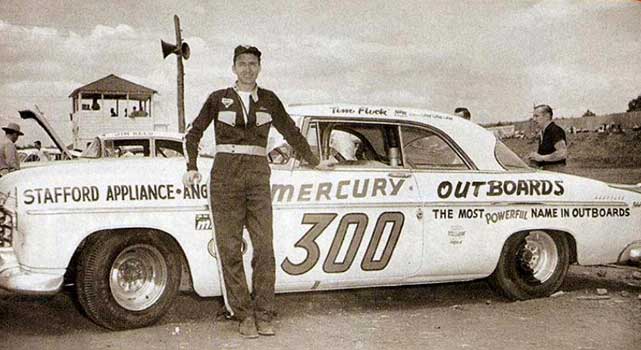
1952-1955 NASCAR Grand National Series Champion, Tim Flock
During the 1950s, Carl Kiekhaefer determined that Americans would take the post-war prosperity as an opportunity to engage in more leisurely activities. Car companies were already making the shift from economically-minded transport towards larger, faster, and more luxurious boulevard cruisers such as the Ford Thunderbird, Chevrolet Bel Air Impala, and Chrysler Imperial. Kiekhaefer Mercury responded by developing new, performance-oriented inline-6 engines that were built for speed. This was called the Mark 75 and it was tested in an undisclosed Florida lake that Kiekhaefer referred to as “Lake X”. Around this time, Kiekhaefer had also been involved in American auto racing, owning two teams in NASCAR and the Triple A Motor Club. Kiekhaefer’s NASCAR effort resulted in two series championships with future legends Tim Flock and Buck Baker and it was this success that really provoked Kiekhaefer Mercury’s need for speed.
Kiekhaefer Mercury merged with the Brunswick Corporation in 1961 and Carl Kiekhaefer himself would eventually resign 8 years later, but the company’s reputation for sheer performance never waned. Now called Mercury Marine, Kiekhaefer’s concept lives in every outboard, inboard, and sterndrive produced.
Here are some of the wildest, most gonzo marine engine designs to ever come out of lower-eastern Wisconsin.
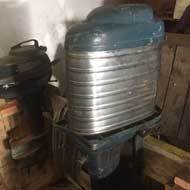
1957 Mark 75
Born from the same lineage as the 1947 KE-7 Super 10 2-stroke and the 1949 40ci Thunderbolt inline-4 4-stroke, the Mark 75 was an inline-6 cylinder that pushed the boundaries of outboard engine performance. Prior to the Mark 75, Kiekhaefer Mercury manufactured specific racing engines carrying the “H” nomenclature but it was the Mark 75--a pair of them--that set a world endurance record on “Lake X”, running 50,000 miles at an average speed of 30.3 MPH. The record still stands unbroken today, even with today’s modern outboard engine technology. One year later, the Mark 75H set a new world speed record for outboard engines at 107 MPH.
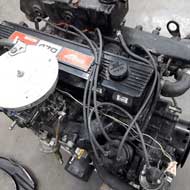
1976 MerCruiser 470
Kiekhaefer Mercury had been producing sterndrive engines since 1961 but in 1976, the company (now called Mercury Marine) introduced a smaller, but more powerful 4-cylinder alternative to their larger 6-cylinder engines. The MerCruiser 470 featured a cast aluminum Mercury Marine block with an iron cylinder head from Ford’s big block 460 V8 that was used in the Lincoln Continental. This brand-new, compact design pumped out an astonishing 170 horsepower compared to the lower 160 and 165 horses from the significantly larger 6-cylinder engines.
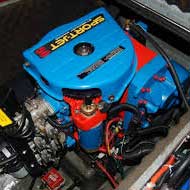
1993 Sport Jet 90
Mercury Marine had long established themselves as the leading manufacturer of outboards, inboards, and sterndrive engines. In 1993, Mercury Marine created a brand new engine, the Sport Jet 90, for Brunswick Corporation’s Sea Ray and Bayliner boat brands. Unlike previous engines which used propellers, the Sport Jet 90 was a water jet drive. Jet drive engines suck in water through a driveshaft-driven impeller and then forced out at high-pressure, creating thrust. The Sport Jet 90 created a brand new market for jet drive engines, fortifying Mercury Marine’s dominance in the marine engine industry.
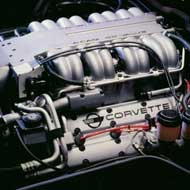
1988 LT5 V8
This engine is unique in Mercury Marine’s history as it’s not even a marine engine at all, but one made specifically for automotive use. In 1986, General Motors, through their acquisition of the UK-based Lotus Group, collaborated with Lotus Engineering to design the world’s fastest production car using the C4 Corvette as a foundation. Lotus Engineering took GM’s LT1 aluminum V8 and transformed it into a dual-overhead cam design and increased its power output by 50% to 375 horsepower (405 horsepower by 1991). The major problem, other than the difficulties of turning a pushrod, overhead valve engine into a dual-overhead cam design, was that neither GM nor Lotus had the resources to produce these engines on a large scale. Thus, Mercury Marine’s MerCruiser division was given the task of mass-producing the LT5 V8. Complete LT5 engines would be shipped from MerCruiser’s manufacturing facility in Stillwater, Oklahoma, back to the Corvette factory in Bowling Green, Kentucky, where they would find homes under the hoods of the “King Of the Hill” C4 Corvette ZR-1. The ZR-1 was only available from 1990 to 1995, but the revolutionary design of the LT5 would influence Mercury Marine’s future marinised V8 engines for years to come. Mercury’s experience with building the LT5 also helped influence the creation of their own 750 horsepower Mercury Racing SB4 DOHC V8 automotive crate engine which, itself, is born from GM’s Gen IV LS7 427 “small block” from the C6 Corvette Z06 and 5th generation Chevrolet Camaro Z/28.
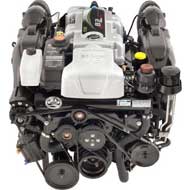
2010 MerCruiser 8.2L MAG H.O.
It has been said that a big engine running slowly is more efficient and stable than a small engine running at dangerously high RPMs. Once upon a time, big block V8s dominated the American highways, but were never really known for their efficiency or overall “environmental friendliness”. In the boating world, big block V8s have been able to enjoy prolonged relevancy and while many manufacturers, just as the auto manufacturers are doing, are trying to figure out ways to produce big power out of small packages. Mercury Marine happens to be among those very same manufacturers. However, they haven’t forsaken the proverbial waterborne petrolhead’s insatiable thirst for speed and power. Topping out at a whopping 8.2 litres of displacement (or 502 cubic inches for the Americans), the MerCruiser 8.2 MAG H.O. (high output) big block V8 sterndrive is a continuation of where General Motors left off with the previous 8.1 litre engine. Taking what they’ve learned throughout the years of producing GM block-based engines, from the venerable 350 Chevrolet small block to helping manufacture the LT5 for the C4 Corvette ZR-1, Mercury Marine has improved upon the previous architecture and created a brand new powerplant that not only churns out copious amounts of horsepower, but also manages to do so while adhering to EPA emissions standards. The MerCruiser 8.2L MAG H.O. was introduced in 2010 as a successor to the former GM-based 8.1 litre V8 and was co-engineered by Mercury Racing. This new MerCruiser big block powerhouse makes a blistering 430 horsepower--and it does this on regular, unleaded 87 octane pump gas! No leaded, 101+ octane boat fuel needed (in fact, you cannot use leaded fuel due to the engine’s stock catalytic exhaust system). The trick is that the 8.2L H.O. has a rather modest compression ratio for a big block V8, especially an American V8. An unusually low 8.75:1 is the ratio for the 8.2L H.O. By comparison, GM’s Gen V small block LT1 that resides under the hood of the current Chevrolet Corvette Stingray and Camaro SS--which is significantly smaller at 376 cubic inches--has a much more aggressive compression ratio of 11.5:1. Also interesting to note is that the MAG H.O. can also tolerate the E10 10% ethanol blend that is mandatory in 7 states. The MerCruiser 8.2L MAG H.O. sits at the top of Mercury Marine’s standard engine hierarchy before dipping into the extreme performance-dedicated Mercury Racing series of engines. It is a testament to the company’s dedication to high performance marine engines as well as their ability to evolve and keep up with the latest in state-of-the-art technological advancements.

